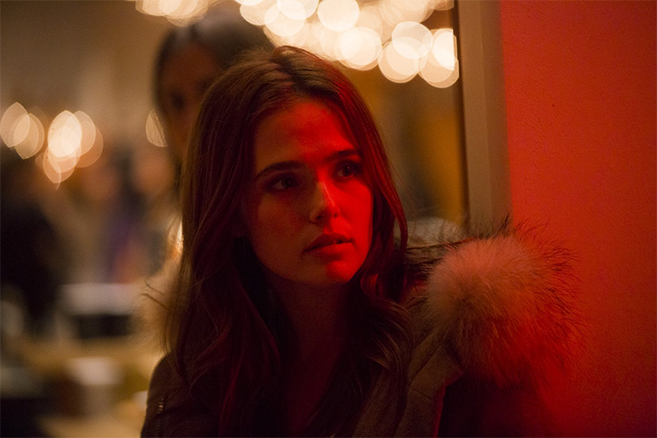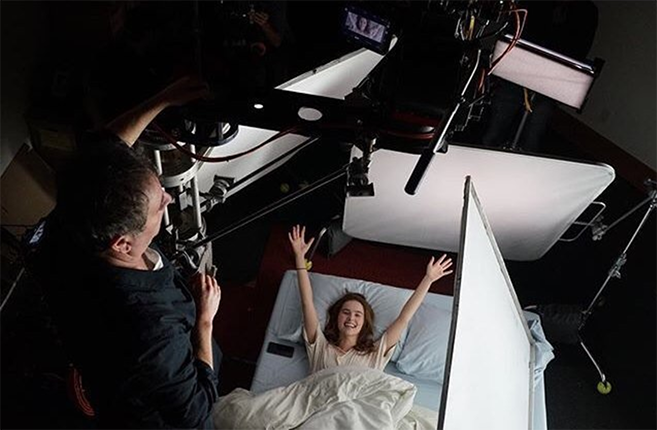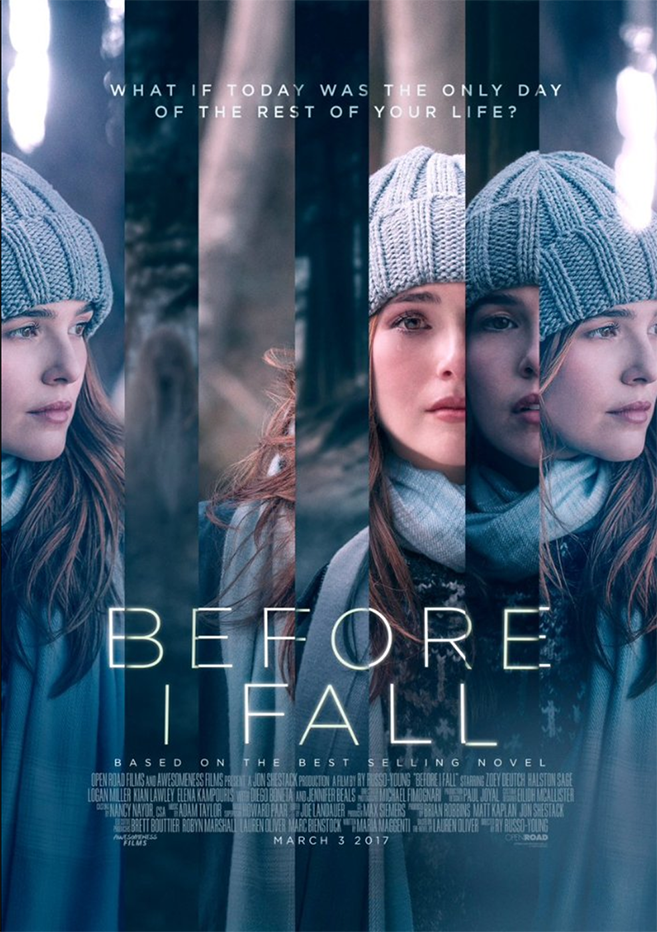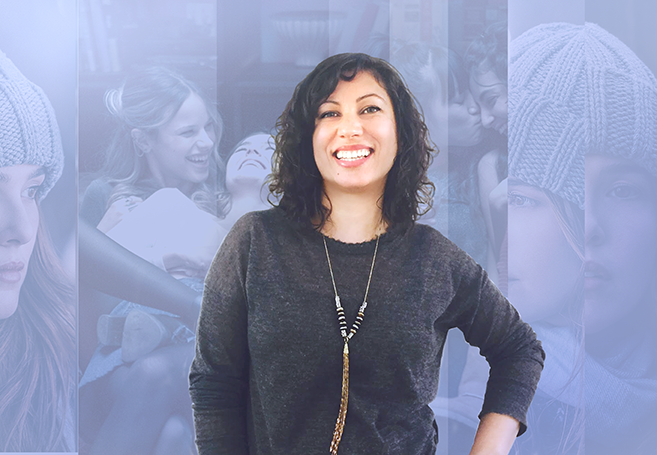In his bestselling book, The Power Of Habit, Pulitzer Prize-winning New York Times reporter Charles Duhigg explains how it takes 30 attempts to change a bad habit. But what if the bad habit in question is someone’s nasty personality? Is it possible for a person like this to change? They say a leopard can’t change its spots, but what if a loop in space-time intervened in said person’s attempt at becoming a better person? This is precisely the premise at play in director Ry Russo-Young’s new film, Before I Fall, which is currently in theatres. Although the cast is centred around its four lead young girls, one of the most compelling characters is not a person at all — it’s the costumes. I had a chance to talk about the concept behind the costumes of Before I Fall with the film’s costume designer Eilidh McAllister (Eilidh is a Gaelic name pronounced Ay-lee). In a fascinating conversation, Eilidh shares her thoughts on everything from jumping out of comfort zones, to how her definition of true beauty and glamour can work in tandem to accelerate one’s journey of self discovery.
FEELguide: Gives us a bit of a synopsis of Before I Fall.
EM: Before I Fall is based on the young adult novel of the same name. The main character is Sam, and we follow her in a day of her life, but the trick of it is she ends up repeating this day because it’s basically her last. Sam is at the top of the social ladder in high school. She’s part of a clique of girls — they’re ‘mean’ girls — and you don’t really like them because of the way they rule the roost. They’re especially mean to this one girl in particular, but as Sam realizes she’s in this time loop she starts to evolve and she starts to become kinder, and the audience begins to empathize with her. It’s an interesting device, sort of like Mean Girls-meets-Groundhog Day.
FEELguide: How did you approach the costume design for the film?
EM: The director, Ry Russo-Young, had a lot of ideas, and in our first meeting we really started talking about the characters. She had images that she brought, as did I, and we collaborated with those. She wanted to make it more current. She updated the dialogue to be very ‘now’, of this new generation, especially with the expressions. She really wanted to make it hot and young, as did I. I created different looks for each of the characters in so that each was different while still working well together — they’re a pack, you read them as a group. They belong together, and you could even see, for instance, that one character has borrowed something from another, and there’s a sort of symmetry. But at the same time, they definitely have their own distinct looks. Sam is the relatable character and she’s very pretty, and her look is much more classically feminine. She’s generally got a classic A-line. Then there’s Lindsay who’s really the Queen Bee. In real life, Halston Sage who plays Lindsay is stunningly gorgeous, and very sweet. So I wanted to play against that and give her some sort of hardness that would work with her character who is quite intimidating. And even though she’s the Queen of her social strata, I wanted her to have a more boyish look, which is more dialed down, such as: t-shirts and jeans, more muted colors, with edgier jewelry. Ally is the most affluent of them all. She’s more ‘nouveau preppy’ — she reads a little more high end, a little more tucked in. Meanwhile, Elody is really wild, and she doesn’t have the greatest home life. Her clothing reflects this — it’s really wild and playful and sexy, a lot more fun and kooky.
.
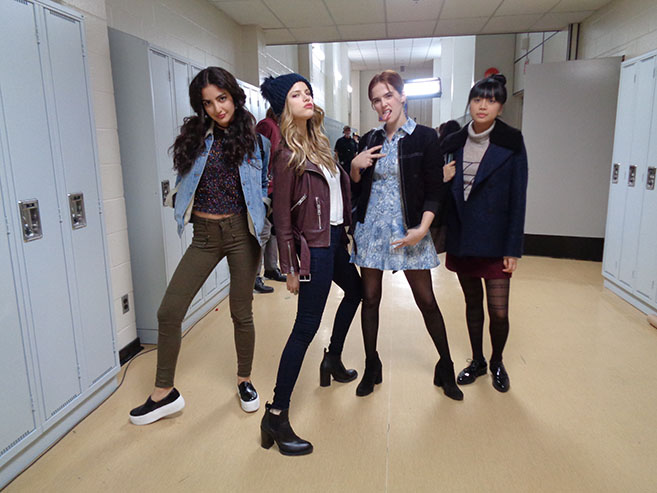
.
FEELguide: A character whose look is very contrary to the four lead girls is Juliet, the social outcast. How did you go about her look?
EM: She’s very different. The other girls are about fashion and looking good, and that’s not what concerns Juliet at all. Ry wanted to her to float, to almost be hiding — hiding in her clothes, hiding in her hair, and having so many layers that it’s difficult to find the person within that. So I dressed her in drab, very non-colors. Her clothing was very broken down, it’s voluminous. It does sort of engulf her, and you can’t really tell exactly where one layer ends and another begins. I wanted her to have a worn, tattered look; a look of nervousness about her. We thought perhaps she would have chewed on her sleeve, for example, so we incorporated that into the costume and breakdown. In some ways she was the hardest to get right, because I was in search of very anti-fashion references for her, and those are very difficult to find. I was inspired by ‘bad fashion,’ as well as Ally Sheedy’s character in The Breakfast Club, which was a similar sort of character. By looking at what she’s wearing you barely even notice there’s a beautiful girl under there. She almost fades into the background.
FEELguide: What were some of the costume challenges of the show?
EM: We had a tight shooting schedule, so we had access to our actors very late. This makes it difficult to get styles approved and locked down, and makes turning it over very rushed. Also, it was an indie film so the budget was tight. The weather was also a huge challenge. We shot in Squamish, B.C., which had very unstable weather. Thankfully I had an amazing, strong team that worked tirelessly to keep the girls warm.
FEELguide: What were some of the best parts of costume designing this show?
EM: Since the film takes place in a loop over one day in Sam’s life, the costumes keep reappearing over and over again. Throughout the movie, each costume gets much more screen time than they would in an average movie, so the small details of each look continue to reveal themselves, as well as the characters. Because we see Sam go through so many different moods during this loop, it was exciting to incorporate this spectrum of moods into the costumes, such as one section of the film when Sam is at her angriest. While on another day she is with her family and it’s all about warmth and comfort. One of my favorite scenes was with Sam and her little sister Izzy. I asked Izzy what she would want to see in her costume, and sure enough she filled it with a cacophony of crazy colors and patterns all together — things we would never do, but a kid certainly would.
.
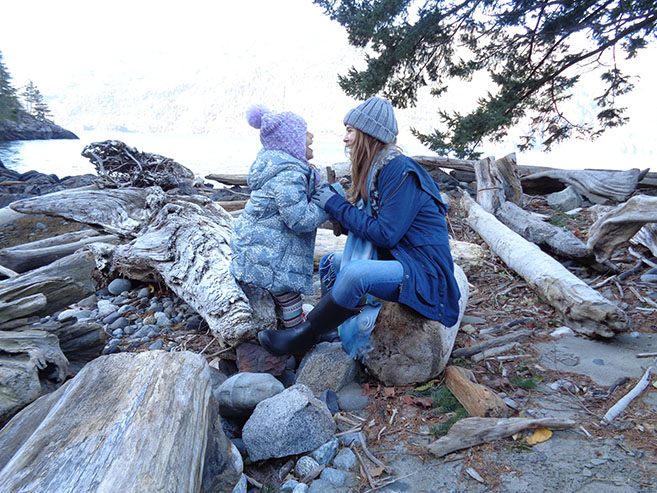
.
FEELguide: What’s your costume design philosophy?
EM: I think what’s most important when designing a film’s costumes is that it just ‘feels right’. It’s going after the truth, would be one way to describe it. Obviously film is a construct — we’re creating this whole world — so it doesn’t necessarily have to be precisely reflective of the time period in question, it just has to feel right. I hate watching films where, for example, I find myself thinking, ‘that character could never afford that’, or ‘that is way too overthought or put on’. I want my characters to have a truth. Such as, ‘yeah, that would be in her closet’, or ‘this shirt used to belong to her father’. Pieces that reflect history, time, choice, memory, etc. There was one movie I worked on called Personal Effects with Kathy Bates, and it was our first day of shooting. At one point we had to stop because her bra strap had broken. So her and I ducked away and I sewed it back into place; but I asked her, “Why are you wearing this old, pink lacy bra?” And she told me, “I bought it because I thought it was really right for my character.” I was so impressed that she was so professional that she took it right down to the under-construction — something the audience would never see. She bought it because she knew it would help get her into character, which was a woman who was working class and would shop second-hand. I love that realness, and I love when an actor allows for a costume to amplify and even guide their work.
FEELguide: What inspires you as a costume designer?
EM: The biggest thing is being out in the street and seeing how people are putting themselves together. Also, when you travel it’s so interesting to see how style changes from one place to another. I always notice when I go some place hot like Spain, Mexico, or L.A., there’s so much more color. In colder cities like Vancouver and New York, people tend to dress in more blacks and greys, which is too bad in my opinion.
FEELguide: Describe the parallels and differences between costume design and fashion design.
EM: Fashion to me is fast and forever changing. It can be really playful and fantastical, yet the narrative is about something bigger — beyond the model. In costume design the purpose is to facilitate the narrative of each individual character. But it’s important that each of these individual looks also work well together as a whole.
FEELguide: What is more likely to help someone cultivate their own personal style: following intuition or taking risks?
EM: It’s a mix of both. First, you must know what looks good on your body, in both shape and color. It’s pointless to wear something that might be trending if it looks terrible on you. At the same time, it’s important to not get stuck, and try new things, have fun, and jump outside your comfort zone. One word of caution though: if something about an outfit is bugging you in the changing room — that will never go away, so just skip it.
FEELguide: What is your definition of glamour?
EM: I’m really attracted to fine fabrics. For me, glamour is always about the combination of style and quality. Glamour is also a feeling. Nothing feels more glamourous than something that fits you perfectly and makes you feel amazing.
FEELguide: What’s the biggest fashion DON’T that you see women making these days?
EM: I am so over leggings as pants. I can’t wait for that trend to disappear.
FEELguide: Are there any emerging trends that interest you the most?
EM: I’ve really warmed up to athleisure wear. Things that you can easily pull out and not have to fuss with. It’s so practical and fashionable at the same time, and can also can look so sleek when you combine different pieces.
.
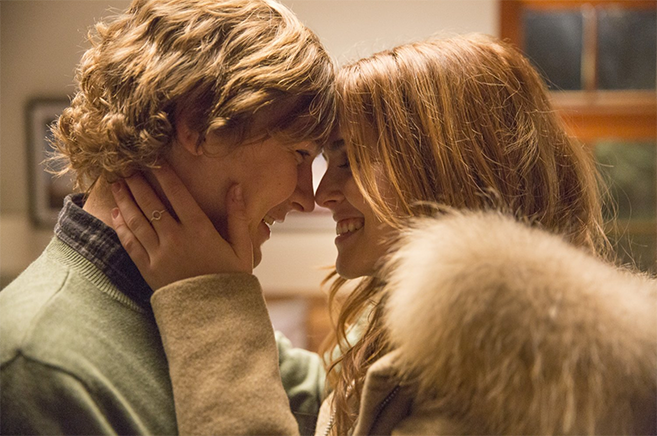
.
FEELguide: This film is about the personal trajectory of Sam, a high school girl. What would be a note to your younger self at that same age?
EM: Youth is like magic, so use it, don’t waste it. Those years are so finite and precious, so take them and run with them. Take any opportunity and just go for it. You’re going to be afraid, but do it anyways. Do the right thing, and follow your intuition.
FEELguide: We live in an age where young kids are subjected to a never-ending barrage of idealized examples of beauty on-screen. What advice would you give to any kids who are having a tough time reconciling these Hollywood ideals vs. beauty in their own personal, everyday life.
EM: It’s important for these kids to know that what they see on-screen is not real and it’s not attainable in everyday life. None of us have a professional makeup and lighting team following us around to give us that perfectly lit glow. Not to mention the fact that film is color-corrected, and often Photoshopped with sophisticated Flame software in post-production to remove every little imperfection. We are so much more than our exterior shell. It might sound trite, but if you want to achieve true beauty, it’s impossible without being a truly beautiful person on the inside. The most alluring beauty is found in the happiest people. Don’t be a fashion victim, or feel you have to follow every trend. What’s most important is to be yourself and love yourself, and to cultivate your own style. Great style is timeless, so even if you can’t afford the most expensive newest things, you can put things together yourself that you found second-hand or that have been given to you. You need to get down to what’s authentic, and that’s precisely what this film is all about.
For more info on Eilidh McAllister visit her website HERE.
.
